What is Home Roasting?
What is Green Coffee? What are
Green Coffee Beans?
What are Qualities of Good Coffee?
How to Choose Green Coffee Beans?
Primers about Types of Coffees:
Guide to Coffee Regions
Guide to Coffee Cultivars
Guide to Coffee Processing Methods
Guide to Coffee Roast Styles
Get Started:
Home Roasting for Beginners
Buy Premium Green Coffee Beans
Buy Home Coffee Roasters
The Art of Home Roasting:
Using Your Senses
Though professional roasters now use high-tech thermometers and precision scales and timers to ensure commercial-grade consistency, home coffee roasting is an art even more than a science, and perfecting your roasting skills will require close attention to the process. This primer will help you to understand how to use your senses to determine when your coffee beans are at just the right roast level. But it will still take a lot of practice, and some trial and error with each new batch of beans – we hope that you have lots of fun on your flavor adventures!
Smell
Unroasted coffee beans start as a pale green color (except for decafs, which are already brown). As the beans begin to heat up, they change first to a straw or tan color, and you will notice a kind of grassy smell. As the beans retain more heat and the roast accelerates, the batch will more rapidly progress through darker shades and the scent will change from a faint roasted coffee aroma to a pungent burning smell with visible smoke.
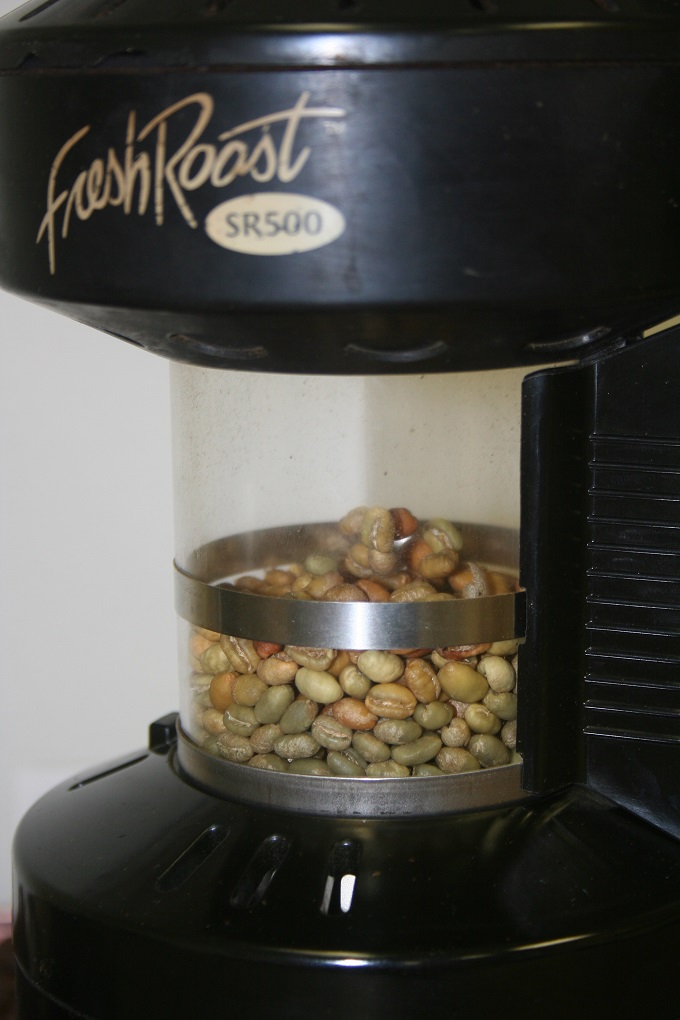
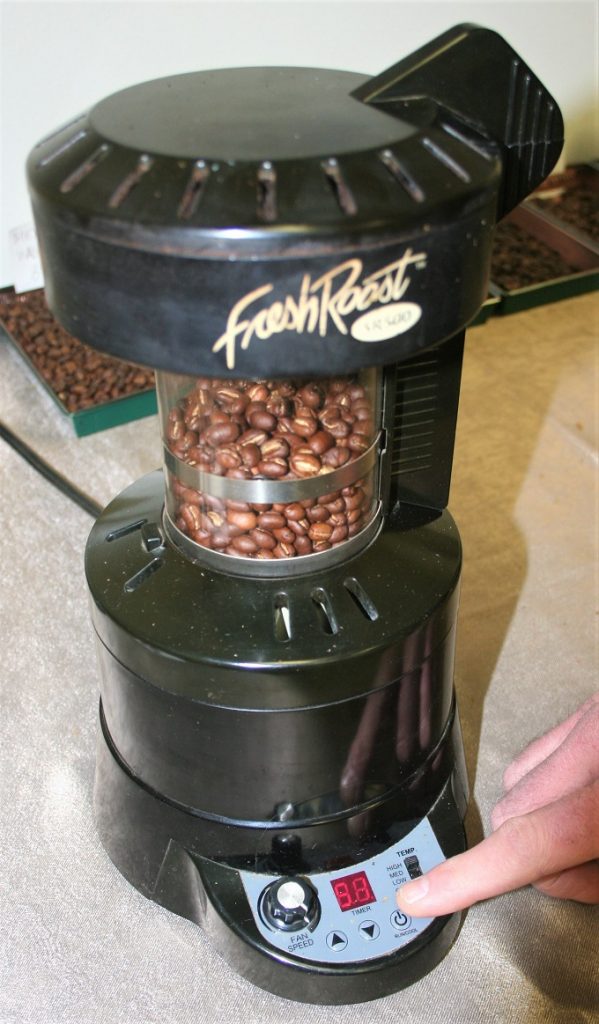
Watch
You may be able to judge the correct roast level by deciding when you like the smell. But for some, this may be difficult, especially since different coffees have different aromas. We find that it is usually easier to determine the correct roast level by eye. A medium roast, or anywhere in the range between “City” and “City Plus” roasts, will look medium-brown and dry. A “Full City” roast is a few shades darker than City Plus, and will begin to display oils on the surface, a subtle velvety sheen. A “Full City Plus” is a deep brown with more visible oils, a noticeably shiny appearance. Beyond that level, there are many designations for dark roasts, such as Vienna, French, Italian, etc, ranging from very dark brown to black. Read our Guide to Coffee Roast Styles to learn more about the wide spectrum of roast levels.
It is very important to understand that roasting goes much faster once you enter the dark end of the spectrum; the differences between Vienna and Italian roasts may be only a few more seconds on high heat. And any roast darker than Full City will tend to dominate the unique characteristics of the beans and to pretty consistently produce flavor profiles more like the dark roast style, less like the coffee itself. For these reasons, it is very (very!) important to watch your roasting coffee, especially during the last few minutes as it nears the desired roast level.
Listen
Coffee can pop or “crack” twice during roasting. The “first crack” is when the coffee expands and breaks its papery coating, which becomes chaff and is automatically collected by the roaster. It will sound similar to popcorn popping (though quieter). The “second crack” is when remaining moisture and oils expand and fracture the bean more dramatically (though it is audibly much quieter than first crack). When you hear second crack, you can be sure that you are moving into dark roast territory. For many home roasters, it is an easy rule of thumb to turn off the heat a few moments before you begin to hear the second crack if aiming for medium roast, or just after the start of the second crack if aiming for medium-dark roast.
Coffee Roasters for Home Coffee Roasting
We carry several types of coffee roasting machines, with different batch sizes and mechanisms to suit different needs. For new home roasters, we often recommend the FreshRoast SR540, the latest version of a proven “fluid bed” roaster which is super easy to use, especially for those new to home coffee roasting.
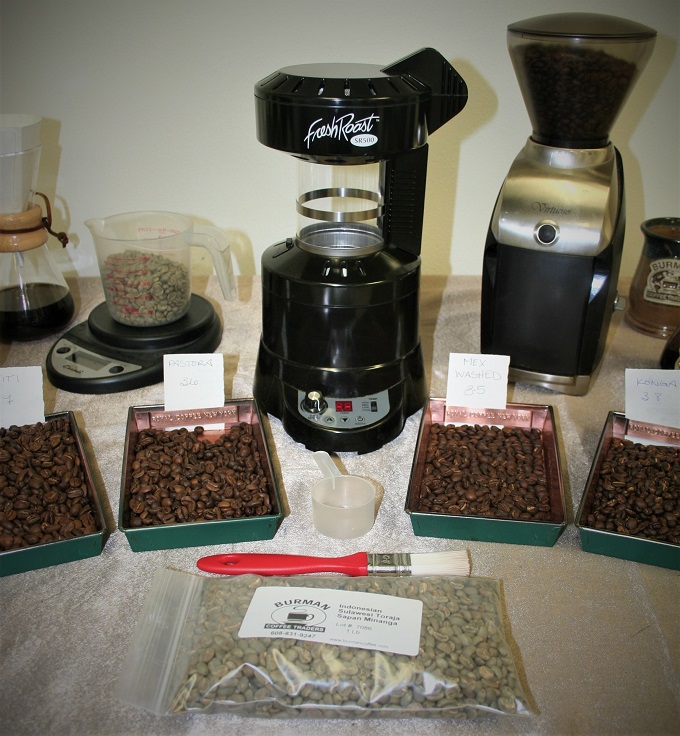
Sounds Easy, Right? It sure is! Read More about popular FreshRoast SR Models
Home Coffee Roaster Tips & User Guides for All Models
Advice and tips on all current and past home coffee roasters sold by Burman Coffee Traders.
Want to learn more about Green Coffee before diving in? Follow these links:
– What is Green Coffee? What are Green Coffee Beans?
– Understanding the Taste Characteristics of Good Coffee: How do Burman Coffee Traders evaluate coffee beans from growers all across the world? What are the characteristics we use to judge quality and how do we ensure a wide variety to suit many different tastes?
– Choosing Premium Green Coffees: Our recommendations for beginning to explore our diverse selection: 3 lb Bundles and Sales.
– Learn How to Use a Home Coffee Roaster
– Learn what to expect from different roast levels in the wide Spectrum of Roast Styles
– Learn about the terroirs of Growing Regions, specific Strains or Cultivars, and the Processing Methods used after harvesting – all affect the taste and roast characteristics of each unique green coffee.
Ready to get started?
- Home Coffee Roaster Reviews & Recommendations
- FreshRoast SR540 – Perfect for Beginners
- Tips & User Guides for All Roasters
- SEE OUR FULL COFFEE LIST
- SALE! Green Coffee Beans Specials

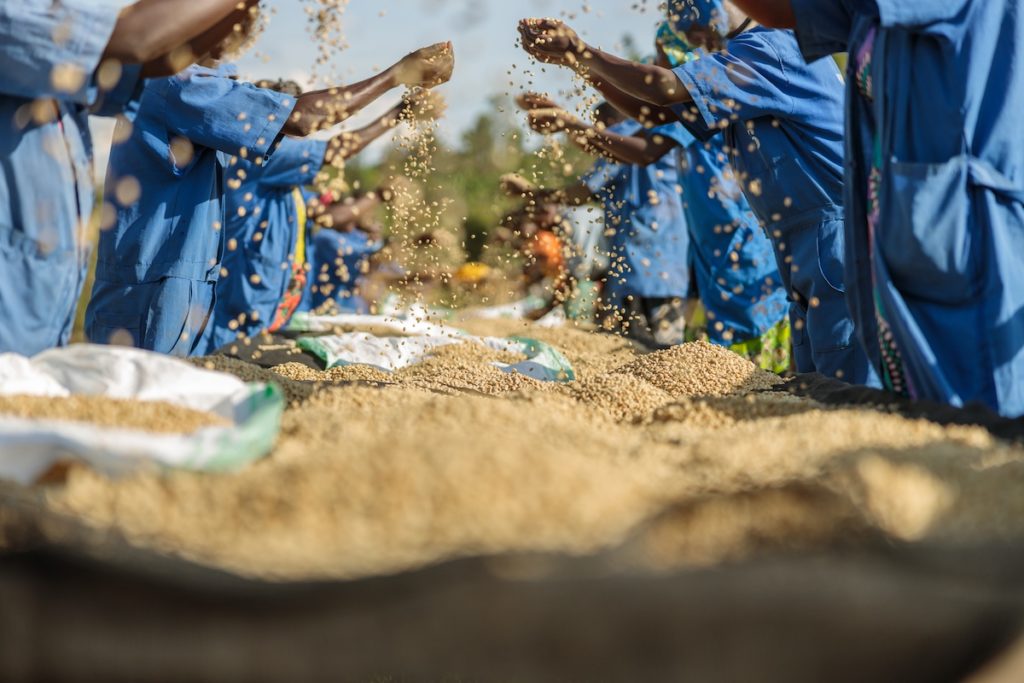
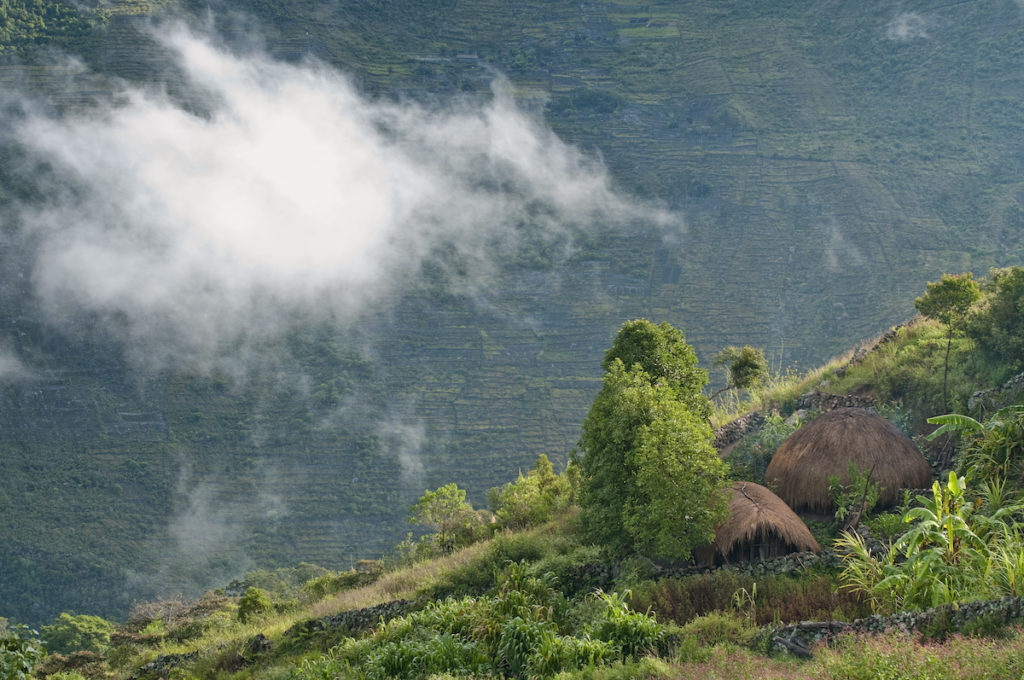

Can roasting coffee beans be done in a typical Electric oven?
Thanks for the question. It may be possible, but very challenging. Honestly, we wouldn’t recommend it. Coffee beans roast best under high heat and constant movement – for most beans, you want the process to go as fast as possible (to preserve nuanced flavors) but also to avoid scorching on one side (which is very likely in an oven). We have heard of folks finding success using perforated trays, and flipping the beans a few times, but it’s not easy. I tried it once as an experiment, and was quite disappointed (those beans ended up in the trash). If you just want to play around with it, we recommend starting with a cast-iron pan (stir stir stir!), or a stove-top or hot-air popcorn popper. When you get more serious about your new hobby, we will be happy to help you pick out the right automatic roasting machine. 🙂